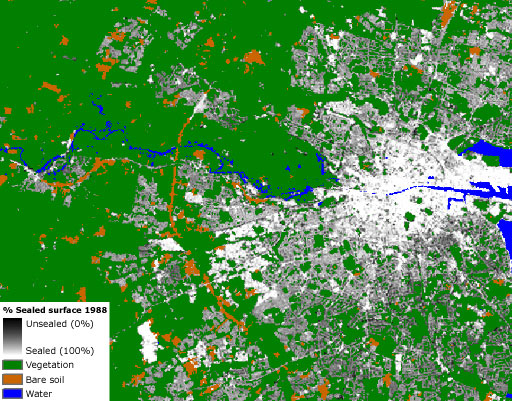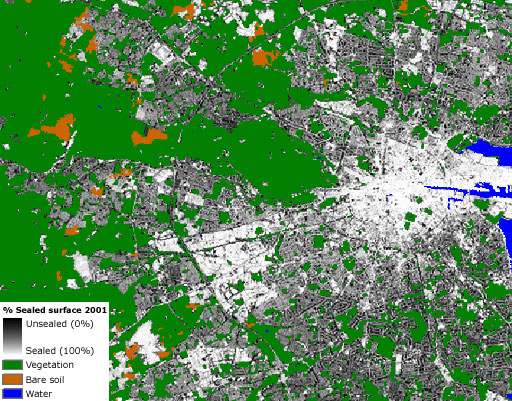| The land cover proportions at each time step, and the gradient information they constitute will be used in work packages 4 and 5 to quantitatively represent the urban spatial structure and composition through spatial metrics. These metrics in turn can be linked to the functional characteristics of the built environment (i.e. land use), can assist the calibration of urban land-use models and help to verify whether the output of these models correctly represents the required spatial patterns. The land cover proportions are also be used to derive calibration parameters for a hydrological run-off model (work package 10).
|

